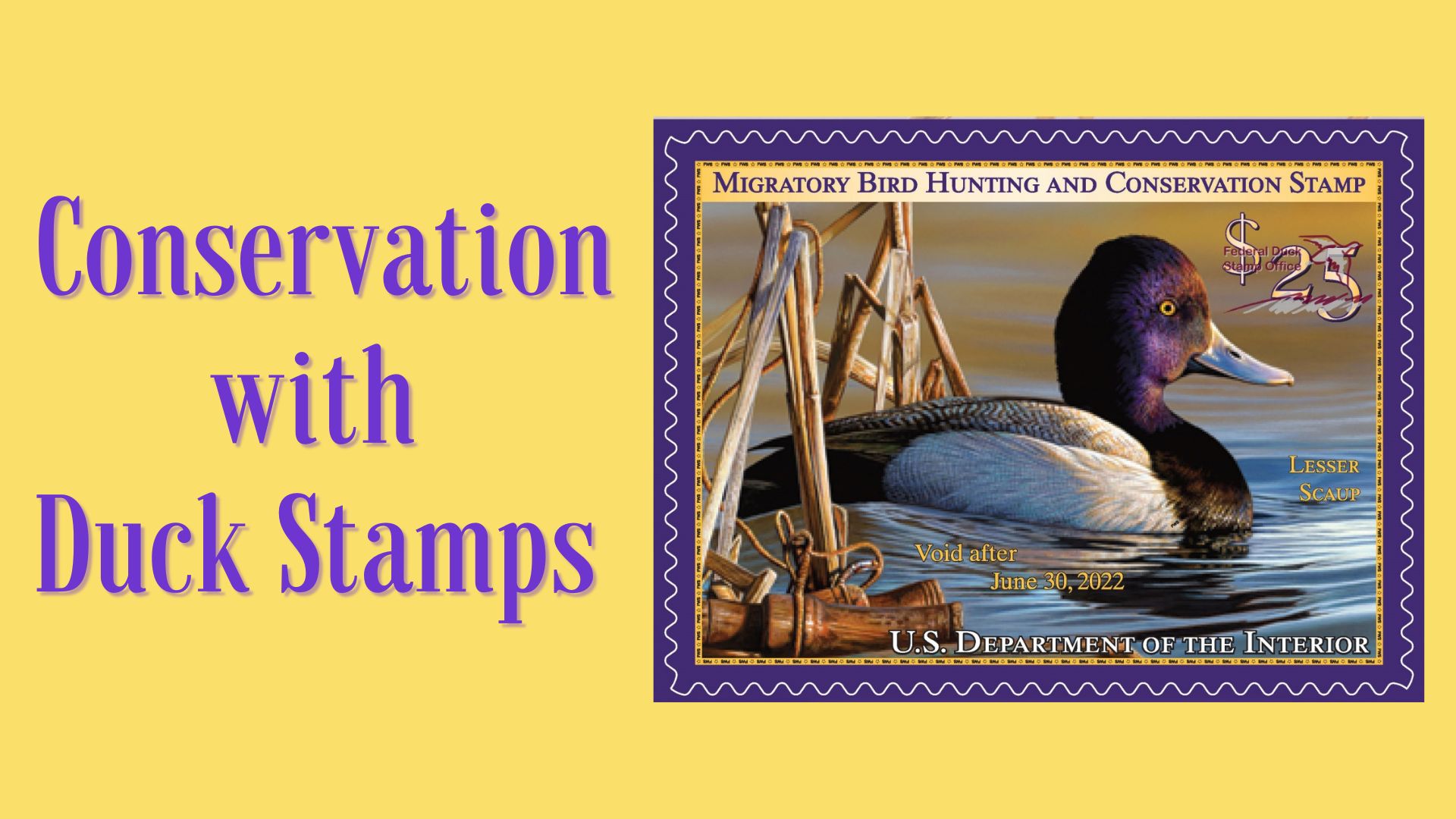You may never have heard of one of the most successful wildlife conservation programs in U.S. history, the Duck Stamp. There are Federal Duck Stamps as well as twenty-eight State Duck Stamp Programs.
In 1918, the U.S. first legislated the protection of waterfowl with the Migratory Bird Treaty Act which ended the commercial trade of feathers between the U.S. and Canada. The heyday of feathers in fashion put intense hunting pressure on migratory birds. The complete extinction of the passenger pigeon in 1914 prompted the formation of many conservation organizations, including the Massachusetts and National Audubon Societies, which in turn helped lobby for the passage of the act. Amendments to the Treaty in 1936, 1972 and 1979 expanded the agreement to other countries. Currently over 1,000 bird species are protected.
President Franklin Roosevelt signed the Migratory Bird Hunting Stamp Act in 1934 which authorized the annual issuance of what is popularly known as the Duck Stamp. Since then, Federal waterfowl stamps have provided over $1.1 billion in funding for the purchase and development of over 6 million acres of federal waterfowl areas which protect habitat for birds and other wildlife in the National Wildlife Refuge System.
Federal Duck Stamps are conservation revenue stamps; 98 percent of the purchase price goes directly to help acquire and protect wetland habitat and purchase conservation easements. Wetlands acquired with Duck Stamp dollars help purify water, aid in flood control, reduce soil erosion and sedimentation, and enhance outdoor recreation opportunities.
Formally known as the Migratory Bird Hunting and Conservation Stamp, the Federal Duck Stamp is a required purchase for all waterfowl hunters 16 and older and valid from July 1 through June 30. The art featured on the Duck Stamp is chosen every year in the only federally regulated and run art contest. It is the longest-running, single-themed U.S. postal stamp and is highly valued as a collector’s item. Many birders, conservationists, and other outdoor enthusiasts buy the stamps to support wildlife conservation.
The Federal Duck Stamp contest location moves around the country each year to generate interest in various wetlands and waterfowl, and to allow more people to see the exceptional wildlife artwork. The U.S. Fish and Wildlife Service chose Bismarck, North Dakota, as the site for its 2022 –2023 Federal Duck Stamp Art Contest and related events. The contest and associated events will be held at the North Dakota Heritage Center and State Museum on September 23-24, 2022.
Thousands of wildlife artists have entered the contest since the competition began in 1949. A diverse panel of authorities will judge this year’s entries and select the work for the next duck stamp. The winning artwork will be featured on the Federal Duck Stamp that will go on sale starting July 1, 2023. To increase access to the public, the contest will also be live-streamed.
The winning 2021-2022 Federal Duck Stamp was credited to Richard Clifton, a Delaware native, this is Richard Clifton’s second Federal Duck Stamp. He has also illustrated over 50 state and international conservation stamps. He lives on a historic family farm adjoining Prime Hook National Wildlife Refuge. Describing himself as an avid waterfowl hunter and casual birder, he is a self-taught artist. He shares his love for conservation with students and young artists.
The winning artist is required to attend seven events promoting the Federal Duck Stamp Programs including the Annual Waterfowl Festival held in Easton, Maryland, each November.
For more information on past contest winners follow this link: Federal Duck Stamp Gallery | U.S. Fish & Wildlife Service (fws.gov)

